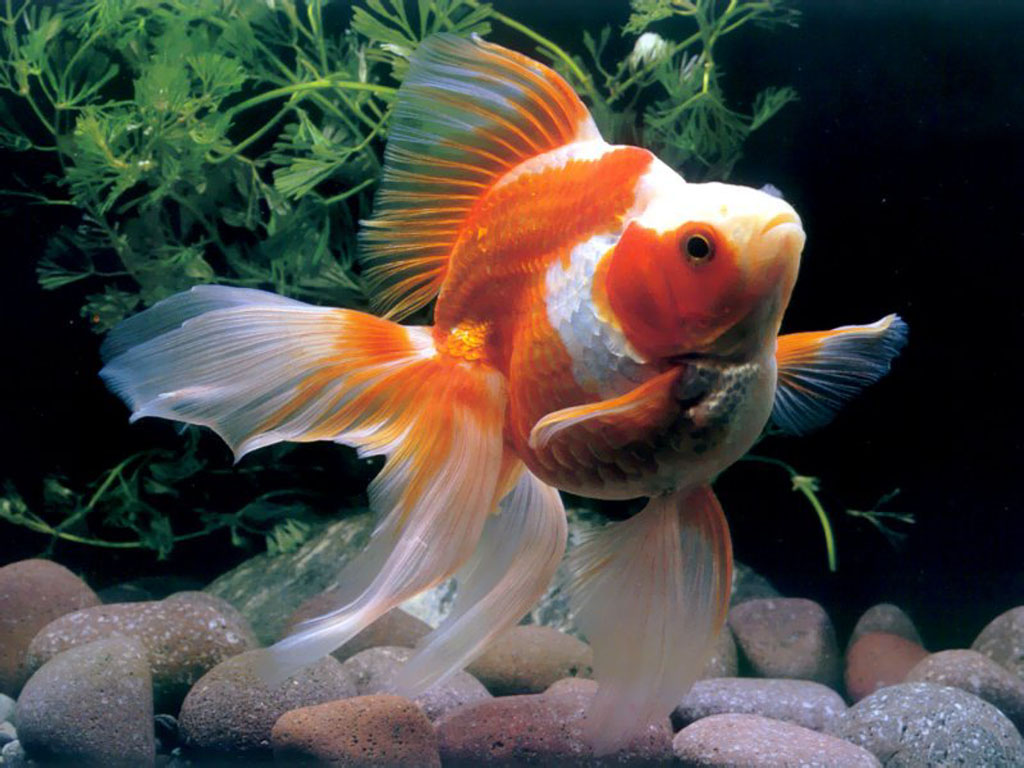
In some cases, goldfish of the varieties like orandas, ryukins, and moors should be kept outside in ponds. Some of the larger varieties of fish require a larger amount of space. A goldfish, depending on type, can be housed in a habitat that provides about 10-20 gallons of water per fish. Habitat size should be dependent on the variety of goldfish and the full-grown size of the fish.

Goldfish should be kept in the largest possible habitat available. This will also keep the habitat clean for display. Filtration is also important to help remove any food items and feces from the environment. Water aeration is vital to maintain oxygen levels within their habitat, which can be provided with an air pump and air stone. Water quality test kits are available to test weekly when you have a freshwater fish tank.

Water should be tested frequently and an aquarium should be cycled before adding any animals. The pH should range between 7-8.4 and temperatures should be kept in a narrow range. Good water quality is critical for keeping a goldfish healthy. Often, goldfish can be kept at water temperatures that are similar to room temperature and do not require supplemental heat. Fancy goldfish can be kept between 68-74 F, while some varieties such as comets or shubunkins can be kept in a wider range from 60-70 F. Goldfish are considered a cold-water species of fish but can also be kept successfully at warmer temperatures. Keeping great care can extend the life of your pet goldfish. Its common for goldfish to not reach their maximum life expectancy due to inadequate care. Goldfish, when kept in excellent conditions, can live from anywhere between 10-15 years, sometimes even up to 20 years. Some goldfish can be elaborate and range in price–allowing for a goldfish type for everyone's interest. There are numerous colorations, patterns, body shapes, fin, eye, and tail types. Most of the goldfish available to pet parents are in one of two categories: common or fancy. Goldfish were first introduced to Europe as a good luck charm in the 1600s and then were introduced to north America in the 1800s.Īfter generations of breeding, there are over 200 breeds of goldfish. It wasn’t until the Song dynasty that other colors started to surface. Goldfish originate from China during the Tang dynasty when a gold color mutation was observed in normal silver carp, then these gold individuals were selectively bred for generations. You can also give your fish some blanched veggies, such as zucchini, cucumber, lettuce, and spinach once a week or so as a treat.Goldfish ( Carassius auratus) is the most commonly kept freshwater fish species across the globe. Goldfish graze on algae throughout the day, so it’s fine to leave a few inconspicuous patches of the green stuff for your pets to snack on between feeds. Simply thaw a cube in some tank water, and then offer it to your goldfish.

Frozen foods come in convenient packets of cubes that you can keep in your home freezer. The best choice for tank-kept goldfish are frozen foods, such as bloodworms and daphnia. Meaty foods also aid digestion and keep things moving through the fish, so you should also include a portion of meaty protein in your fishes’ daily diet. That food is specially formulated for round-bodied fancy goldfish, helping to prevent common digestive problems, such as constipation and bloat. Your fishes’ staple diet should include goldfish flakes or pellets. That means the fish enjoy a diet consisting of plant matter and some meaty protein.


 0 kommentar(er)
0 kommentar(er)
